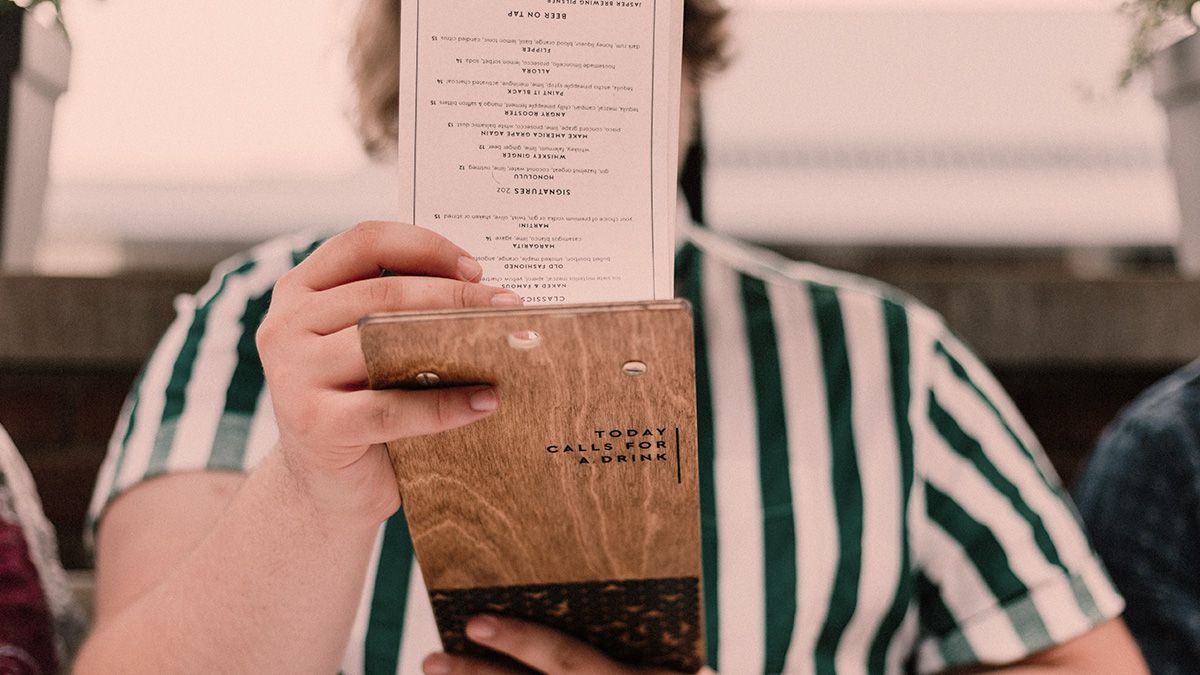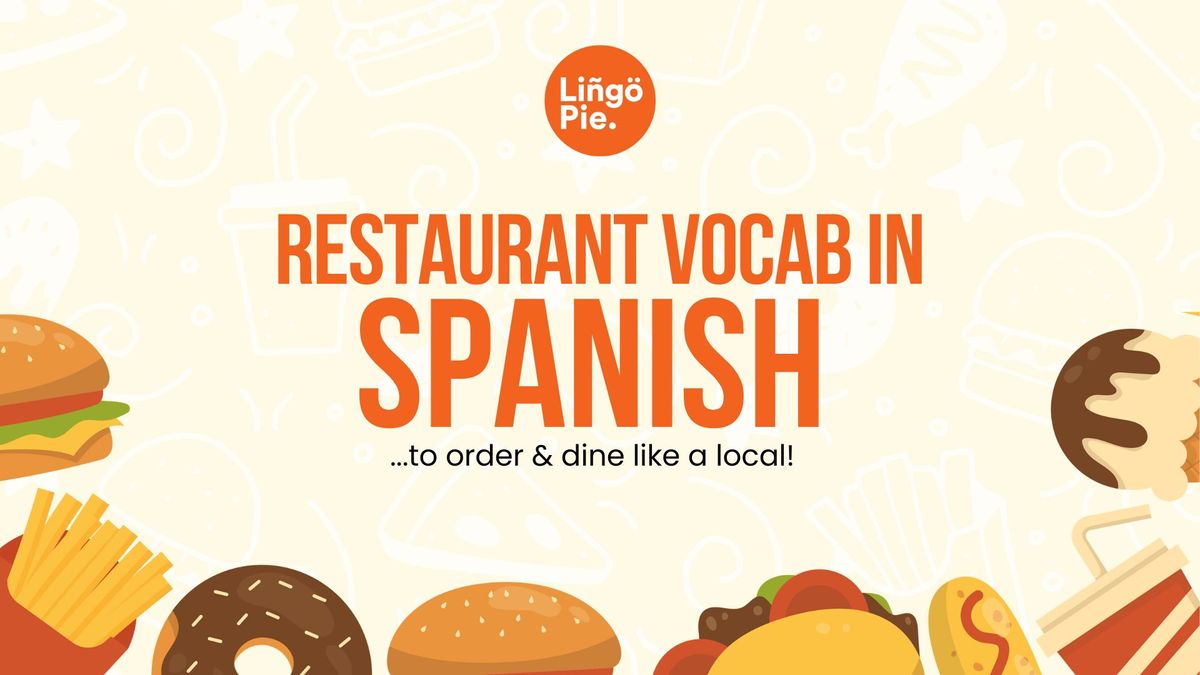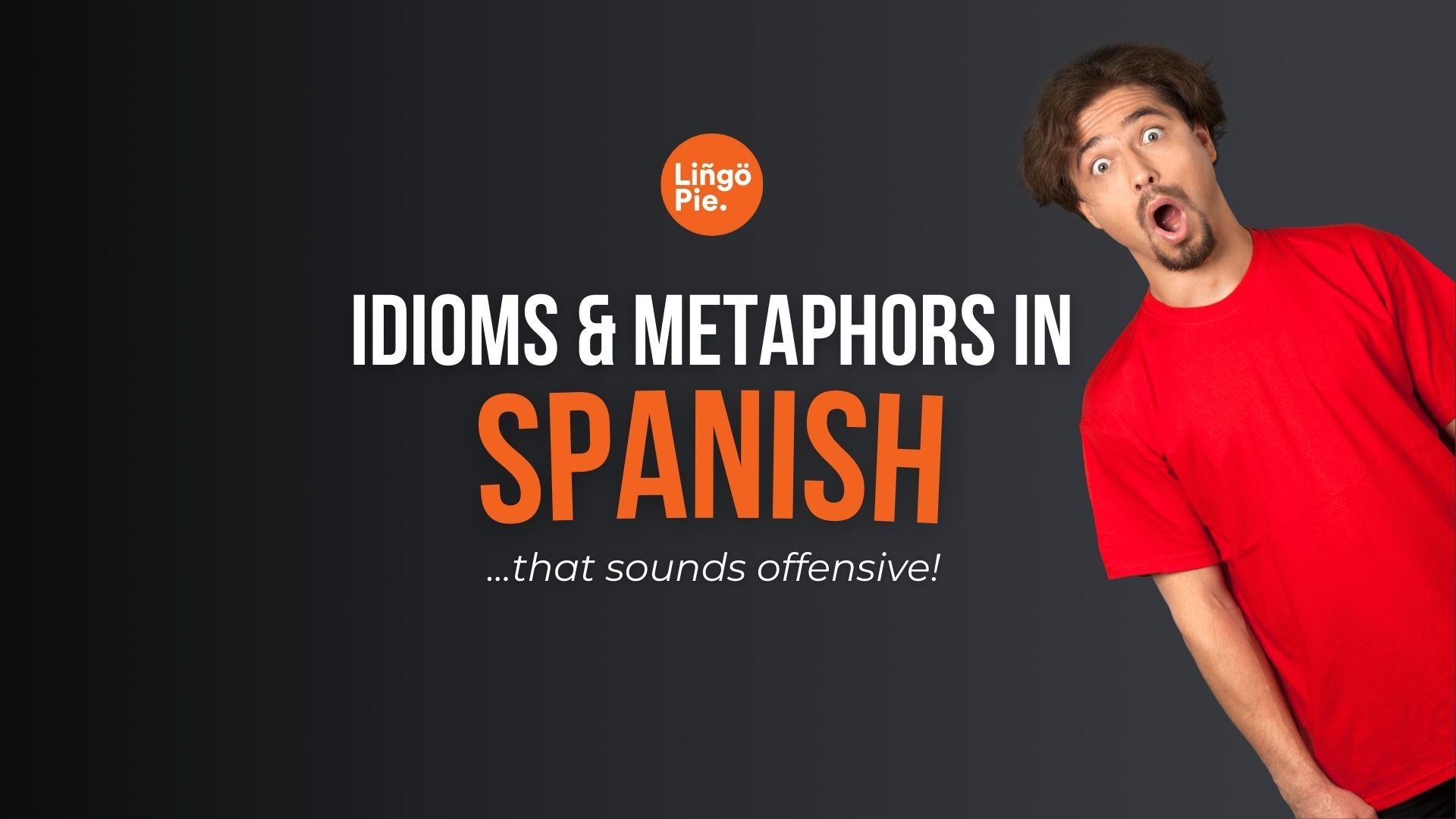If you're thinking of taking a trip to a sunny Spanish-speaking country this summer, and you can't wait to eat the famous Latin American or Spanish food, we at Lingopie suggest you check out our ultimate guide to Learn Spanish restaurant vocabulary.
In this post, we’ll list some basic words and phrases that will help you order food, explain your allergies, and communicate politely with the waiter. What more could you ask for?
Before we get started, remember to check out Lingopie's streaming platform, where you can binge-watch Spanish TV and movies to speed up your language learning, build vocabulary, and work on your listening skills.
If you want tips on what shows to watch, check out our list of the best telenovelas to help you improve your Spanish.
Now let’s get started on some restaurant vocab!
Basic Spanish Restaurant Vocabulary
Before you can sink your teeth into delicious Spanish tapas, world-famous paella, or a classic tortilla de patatas, you'll need to know how to make a reservation, get a table, and ask for something in a Spanish restaurant.
- El restaurante / El bar - The restaurant / The bar
- Tengo una reserva para dos personas - I have a reservation for two people
- Una mesa para cuatro, por favor - A table for four, please
- Perdone - Excuse me
"Perdone" is a polite way to get a waiter's attention when you want to ask for something. It's easy to remember as it is super similar to "pardon me."
Now that you know how to get the waiter's attention, let's talk about ordering food.
Spanish Vocabulary: Asking For The Menu
When seated in the restaurant of your choice, you will want to peruse the menu and start getting excited about your meal.
It could be that the restaurant is offering specials, a fixed menu at a set price, or a time-specific menu, so here are the phrases to look out for:
- ¿Puedo ver el menú / la carta? - Can I see the menu? (Either word will do)
- El menú del día - Today's menu/specials
- Un menú de precio fijo - A fixed menu, which will generally include two or three courses and a drink for a fixed price
- Desayuno, almuerzo, cena - Breakfast, lunch, dinner

Ordering And Formality
In Spanish, there are two ways to say "you" singular. We have tú (informal) and usted (formal).
You don't need to worry too much about this as a beginner, but you'll notice the phrases below have an optional "s" in brackets at the end of the verbs.
With an "s", it is the informal you, without it is the formal you.
- ¿Qué quiere(s)? / ¿Qué va(s) a tomar? - What would you like (to eat)?
The waiter might address you formally or informally. If you pick up on this, you can respond with the same level of formality. However, if in doubt, just use the formal ending without the "s".
- ¿Qué me recomienda(s)? - What do you recommend?
- Me pone(s) ... por favor - This literally means give me ... please. This might sound strange to an English-speaking audience. However, in Spanish, as long as you say please, it is a perfectly normal way of ordering food and drinks.
- Me trae(s)... porfa - Can you bring me ... please, which is another common way to order. "Porfa" is a casual way that many locals will use to say please, and is a combination of the words "por favor".
Simple Food & Drink Vocabulary
Then you can insert the item that you would like to order, such as...
Drinks
There are an infinite number of drinks you can order in Spanish and Latin American restaurants, and we will only scratch the surface here. The basics include:
- Un vaso de agua - A glass of water
- Una caña - A beer
- Una copa de vino blanco/ vino tinto - A glass of white wine / red wine
- Un tinto de verano (con gasera/ con limón) - a popular drink in Spain in the summer, which is red wine mixed with soda water or lemonade
- Un zumo de naranja (Spain) / jugo de naranja (Latin America) - an orange juice
- Un café (con leche) - a coffee (with milk, which is like a latte)
- Otra cerveza / Otro tinto de verano, porfa - Another beer/ tinto de verano, please

Common Restaurant Food Items
Once you have your drink of choice, you can dive into the much-anticipated food.
Spain and many other Spanish-speaking countries are famous for various meat, soup, and seafood dishes.
Many Spanish restaurants will offer tapas, which are very small plates for one individual to taste a dish.
Or, you can order a ración, which is a plate of small bites to share. While you're in Spain, you must try these iconic tapas/raciones:
- Gazpacho - Cold vegetable soup
- Jamón y queso - Ham and cheese
- Pescaíto frito - Little fried fish
- Pimientos de padrón - Padrón peppers
- Pincho de tortilla - A piece of tortilla

Seafood
Craving for that buttered shrimp? Here are the common seafood-related words and Spanish dishes that are sure to make you drool!
| Spanish | English | Popular Spanish Dish |
|---|---|---|
| camarones | shrimp | Camarones a la plancha (Grilled shrimp) |
| cangrejo | crab | Cangrejos rellenos (Stuffed crabs) |
| langosta | lobster | Langosta a la parrilla (Grilled lobster) |
| pescado | fish | Pescado a la veracruzana (Fish Veracruz-style) |
| calamares | squid | Calamares en su tinta (Squid in its ink) |
| atún | tuna | Ensalada de atún (Tuna salad) |
| pulpo | octopus | Pulpo a la gallega (Galician-style octopus) |
Meat
Need something heavy on the tummy? Here are the common meat-related words and Spanish delicacies that are sure to make you ask for more servings!
| Spanish | English | Popular Spanish Dish |
|---|---|---|
| chorizo | sausage | Chorizo al vino (Sausage in wine) |
| jamón | ham | Jamón serrano (Serrano ham) |
| lomo de cerdo | pork loin | Lomo de cerdo al horno (Baked pork loin) |
| bistec | steak | Bistec a la mexicana (Mexican-style steak) |
| pavo | turkey | Pavo relleno (Stuffed turkey) |
| codorniz | quail | Codornices al ajillo (Quail in garlic sauce) |
Want to order steak? Here are the words to help you specify your desired level of doneness.
- muy crudo — very rare
- poco asado — a little rare
- termino medio — medium
- bien cocida — well done
Fruits
Have you ever wondered how these juicy treasures are integrated into the country's mouthwatering cuisine? Well, let me tell you, the Spanish-speaking world has truly mastered the art of showcasing the vibrant flavors and natural sweetness of fruits in their dishes.
| Spanish | English | Popular Spanish Dish |
|---|---|---|
| manzana | apple | Tarta de manzana (Apple tart) |
| naranja | orange | Ensalada de naranja (Orange salad) |
| plátano | banana | Platanos fritos (Fried plantains) |
| sandía | watermelon | Agua de sandía (Watermelon agua fresca) |
| piña | pineapple | Piña colada (Pineapple colada) |
| mango | mango | Mango con chile y limón (Mango with chili and lime) |
| limón | lemon | Pollo al limón (Lemon chicken) |
| fresa | strawberry | Fresas con crema (Strawberries and cream) |

Personalizing Your Order
Don't worry if you get confused about whether to order tapas or raciones, or how many dishes you will manage to eat.
You can always consult the prices in the restaurant to judge how big the plate will be or ask the waiter. If you are unsure of the size of a dish, or whether it comes with sides, you can ask:
- ¿Este plato viene con...? - Does this dish come with...?
- Ensalada - Salad
- Pan - Bread
- Patatas fritas (Spain) / Papas fritas (Latin America) - Fries
- Sí, viene con ensalada, pero no con pan - Yes, it comes with salad, but not with bread
- Vamos a compartir - We are going to share
- Me trae un poco de sal/ azucar, porfa - Can you bring me some salt/ sugar, please
Preferences and Allergies
When you're ordering food, you'll need to make sure you can tell the restaurant staff your preferences, as well as any allergies or intolerances you might have.
One of the most famous examples of Spanish cuisine is the delicious tortilla de patatas, which is a Spanish omelette with potatoes.
However, Spanish opinion is divided between those who like their tortilla with onions and those who prefer it without. We recommend that you try both and make up your own mind!
- Con/ Sin cebolla - With/ Without onion
- Tengo alergia (a las nueces/ los mariscos) - I am allergic (to nuts/ seafood)
- Soy vegetariano/a - I am a vegetarian (use the "o" ending if you are male, and the "a" if you are female)
- El bocadillo no contiene carne, gluten ni lactosa - The sandwich does not contain meat, gluten or lactose
- El postre tiene cacahuetes - The dessert has peanuts
- Leche de avena/ soja/ almendras - Oat/ soy/ almond milk
Want to request a specific dish? It's also helpful to know these common Spanish terms for how to prepare that:
- a la plancha — on the grill
- a la parrilla — barbecued
- asado — roasted
- al ajillo — with garlic
- apanado — breaded
- filete — filleted
- frito — fried
Restaurant Etiquette
Finally, we should talk about manners and the Spanish vocabulary you will need in order to be polite. You will hear these phrases in any Spanish restaurant, as well as bars and other tourist spots.
When any Spanish-speaking waiter brings your food, they will almost certainly say the phrase:
- ¡que aproveche! or buen provecho - bon appétit, for want of an English equivalent
To which you can say:
- Gracias - Thank you
- Este postre está muy rico - The dessert is very tasty
Finally, if you want to reach across another person at the table or move past someone in the restaurant, you can say:
- Permiso - excuse me (your body is in my way).
This is a very useful word. It is a formal and polite way to ask permission to pass or to reach across someone at the table, entering into their personal space.
This word comes in handy in busy places like restaurants, the metro, and crowded streets. - De nada - you're welcome

The Check and The Tip
At the end of the meal, you can do the classic writing-in-the-air sign for the check, or you can use your words and ask the waiter:
- ¿Me trae la cuenta? - Can you bring me the check?
- La cuenta, por favor - The check, please
- Con efectivo - With cash
- Con tarjeta - With card
- Aceptamos tarjetas de crédito - We accept credit cards
Something that might stand out to you in Spain as a big cultural difference is that it isn't common to leave a tip.
Often when locals pay for their beers, they will leave the exact change and the waiter will not expect a tip.
However, if you have had good service or enjoyed your restaurant meal, a tip is certainly appreciated!
- La propina - the check (or the tip, if you are from the U.K)

FAQs
How do Spanish people say restaurant?
In Spanish, the word for "restaurant" is "restaurante". It's pronounced "res-tow-rahn-tay". Some examples:
1. ¿Dónde hay un buen restaurante por aquí? - Where is a good restaurant around here?
2. Vamos a cenar a un restaurante esta noche. - Let's go eat at a restaurant tonight.
3. Ese restaurante tiene una estrella Michelin. - That restaurant has a Michelin star.
So in summary, to say "restaurant" in Spanish, simply use the word "restaurante". It derives from the French word "restaurant" and has the same basic meaning.
What are the Spanish phrases for waiters?
The Spanish words for "waiter" are El camarero (masculine) and La camarera (feminine). here are some common Spanish phrases using these words:
- ¿Podría venir el camarero, por favor? - Could the waiter please come over?
- La camarera tomó nuestra orden. - The waitress took our order.
- Necesitamos un camarero para esta mesa. - We need a waiter for this table.
- ¿Dónde está nuestra camarera? - Where is our waitress?
You can also use the more formal "mesero/mesera" which directly translates to "table server". Additionally, "jefe de salón" refers to the headwaiter or maître d' in charge.
What are the Spanish dinner words?
The Spanish word for "dinner" is "cena". Some common Spanish words and phrases related to dinner:
- La cena - Dinner
- Cenar - To have dinner
- El plato principal - The main course
- La entrada - The starter/appetizer
- El postre - The dessert
- A la carta - From the menu
- El menú del día - The daily set menu
Examples:
- ¿A qué hora cenamos esta noche? - What time are we having dinner tonight?
- El plato principal de la cena es pescado - The main course for dinner is fish
- Después de la cena, pedimos un postre - After dinner, we ordered a dessert
Have A Great Time In Spain - ¡Que Aproveche!
This has been a simple guide to Spanish restaurant vocabulary. From asking for the menu to ordering food and being polite, we hope that you feel ready for your trip to a Spanish-speaking country.
If you are learning Spanish and want to speed up the language learning process, check out Lingopie's streaming service, where you can watch TV and movies in Spanish.
This is a great way to pick up lots of Spanish vocabulary, as listening to a native Spanish speaker in a TV show will expose you to authentic language, slang words, colloquial phrases and more dinner-time-specific words.
In addition to our TV and movies content, Lingopie has launched a new free project called Lingopie Music! Check out our article listing some of the best songs in Spanish for you to sing your way to fluency.
You will develop your confidence and language skills while having fun. That's all for now - thank you for learning Spanish words and phrases with us.
¡Hasta Luego!









